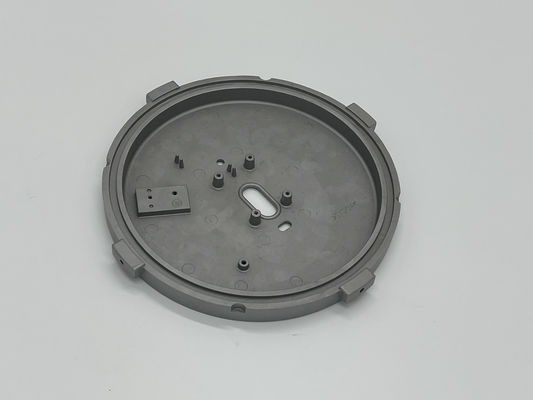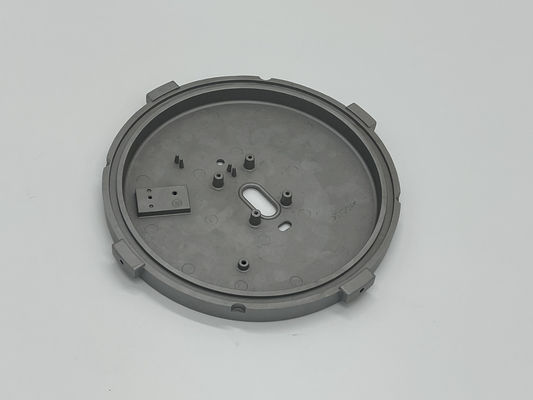Precision High Pressure Die Casting Aluminum Parts Components Process

Contact me for free samples and coupons.
Whatsapp:0086 18588475571
Wechat: 0086 18588475571
Skype: sales10@aixton.com
If you have any concern, we provide 24-hour online help.
x| Weight | Lightweight | Mold Shot | 50000-100000 Shots |
|---|---|---|---|
| Installation | Easy | Brightness | High |
| Material | Aluminum Alloy | Surface Treatment | Powder Coating |
| Power Source | Electricity | Lifespan | Long |
| Highlight | Precision High Pressure Die Casting Aluminum,High Pressure Die Casting Aluminum Parts,High Pressure Die Casting Components Process |
||
Customizable LED Die Casting Aluminum Alloy with High Brightness
Product Description:
LED die casting is a specialized process for producing high quality, precision LED light housing. This technique is used to produce highly efficient die cast aluminum alloy parts that are lightweight and have a superior corrosion resistance. It is a cost-effective way to produce complex shapes with tight tolerances. The die casting process involves injecting molten aluminum alloy or other materials into a mold made with H13 steel, 2344 steel, or other durable materials. The high pressure used during the casting process ensures that the parts have a precise and consistent shape and size. The die cast aluminum alloy parts have an excellent heat dissipation, ensuring that the LED lights are kept cool and have a long lifespan. The superior corrosion resistance of the LED die cast parts also ensures that the LED lights remain reliable and durable over time. LED die cast light housing is an ideal choice for those who want a reliable and efficient lighting solution.
Features:
- High Pressure Die Cast LED Light
- Aluminum LED Die Cast
- Mold Material: H13 Steel,2344 Steel,etc
- Tolenrence: 0.02mm -0.05mm
- Material: Aluminum Alloy
- LED Die Casting For Lighting
- Lifespan: Long
- Heat Dissipation: Efficient
Technical Parameters:
| Attribute | Detail |
|---|---|
| Corrosion Resistance | Strong |
| Mold Material | H13 Steel, 2344 Steel, etc. |
| Tolerance | 0.02mm - 0.05mm |
| Brightness | High |
| Heat Dissipation | Efficient |
| Power Source | Electricity |
| Mold Shot | 50000 - 100000 Shots |
| Surface Treatment | Powder Coating |
| Application | Indoor/Outdoor |
| Durability | High |
Applications:
LED Die Casting is an ideal solution for a variety of applications and scenarios. It offers strong corrosion resistance and is powder coated for a durable finish. It is also easy to install, providing up to 50000-100000 shots for molds. Furthermore, LED die casting provides excellent heat dissipation for efficient operation. Therefore, LED die casting is an optimal choice for high pressure die cast LED light, die casting for LED, and other LED die cast fixtures.
Customization:
- Mold Material: H13 Steel, 2344 Steel, etc.
- Material: Aluminum Alloy
- Durability: High
- Mold Shot: 50000-100000 Shots
- Brightness: High
Our LED Die Cast Custom Service offers a unique and cost-effective solution for custom aluminum LED Die Cast housing. Our Aluminum LED Die Cast materials are of the highest quality, with high durability and brightness. We offer custom mold material options, such as H13 Steel and 2344 Steel. Our mold shot range is from 50000 to 100000 shots.
FAQ:
- Q1: What is LED Die Casting?
- A1: LED Die Casting is a process of manufacturing components or products by injecting molten metal into a mold under high pressure.
- Q2: What advantages does LED Die Casting have?
- A2: LED Die Casting has a number of advantages, including high production rates, repeatable precise dimensions, and uniform part-to-part quality.
- Q3: What materials can be used for LED Die Casting?
- A3: Aluminum, magnesium and zinc are the most commonly used materials for LED Die Casting.
- Q4: What is the process for LED Die Casting?
- A4: The process for LED Die Casting involves thermo-mechanically treating the material, melting it in a furnace, and then injecting it into a high-pressure mold.
- Q5: What is the typical lead time for LED Die Casting?
- A5: The lead time for LED Die Casting depends on the size and complexity of the parts, but typically ranges from a few days to a few weeks.





